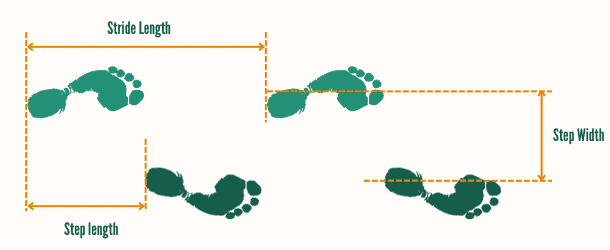Keeping track of your steps in a day is an important way to make sure you stay physically active. Though walking is effective, sometimes, you’ll want to change up your cardio for a bit of variation, such as by cycling or exercising with a stationary bike.
Moving by cycling is pretty different from walking, so how do you convert bike miles to walking steps? The quick answer is one mile on a bike equals to an average of 2000 steps.
For a more accurate measurement, here’s how to calculate how many steps in a mile on a stationary bike.
Table of Contents
Convert Steps to Bike Miles
What to prepare
- A marker and ideally masking tape to help mark your first and last steps for the first part of our calculation
- Measuring tape
Step 1: Find your stride length.
Mark your first position with a marker and take 10 steps in a straight line. Mark your position at the 10th step and measure the distance between the first and second point with a measuring tape.
Once you’ve got the distance between the two marks, divide them by 10, and you’ll get your average stride length.
As an example, if your distance between the two points is 20 feet, then your stride length should be 2.0 feet.
Step 2: Convert miles to feet and calculate the number of steps.
One mile is equal to 5280 feet, so divide that by your stride length to get how many steps you walk in a mile.
If you walk 2.5 feet per step, that means that per mile, you take 2,112 steps.
Here’s a handy step conversion chart to keep track of the steps per mile, using a 2.5 feet stride length as a base:
So theoretically, when converting biking miles to steps, in order to get to 10,000 steps per day, you should be cycling for about 5 miles daily.
Here is a quick formula guide for your biking-to-steps conversion:
5280X/Y= Z
X = Miles Cycled
Y = Stride Length
Z = Steps Covered
Keep this formula on hand, so you have a quick cycling-to-steps calculator, though it may be better to have a converter app at the ready for more on-the-go calculations.
Factors Affecting Step Count
Several factors that affect step count include sex, height, and age.
- According to a study from the University of Oklahoma Health Sciences Center, a female step length is about 26 inches, or 2.1 feet, while a male step length measures to about 31 inches, or approximately 2.6 feet.
- This, in itself, may vary depending on a person’s height, or more specifically, their leg length. Someone with longer legs who performs the same movement as someone with shorter legs will be able to cover longer distances.
- The last to affect step count is age. As adults get older, their stride length will shorten depending on other factors such as balance, muscle mass, and cardiovascular fitness.
Adults with poorer balance will compensate by shortening their stride lengths to centralize their mass to help them be more stable while walking.
Likewise, for seniors who develop weaker legs over time, taking shorter strides help the body put less strain on their legs and cardiovascular health, and help conserve energy to walk longer.
Cycling Vs Walking: Which is Better for Exercise?
Cycling and walking are both great low-impact cardio exercises that have an equal amount of benefits and their own share of advantages.
Cycling is a great exercise if you can invest in the equipment for cycling, as the bike can be adjusted to your preferred level of intensity while also giving focus to your leg muscles with less strain on the rest of the body.
This is also better if you’re constrained on the time you have to exercise but want to burn more calories in comparison with the biking equivalent to walking.
Walking, on the other hand, is good for people who prefer a more slow and steady approach to their fitness. It’s a good fat-burning workout for people who can dedicate a good amount of time to exercising while also not having to spend a lot on equipment, unlike cycling.
So which of the two is better? This would depend on you overall, as the best way to determine would be to try them both out interchangeably and see which exercise fits best according to your lifestyle and exercise routine.
Conclusion
Reaching your ideal step count in a day can be hard work, but it helps us break a good sweat and overall adds up to your health and fitness.
Knowing how many steps in a mile on a stationary bike is one way to work towards your step goal, as now you can change up your cardio in more ways than one, and hopefully, you’ll be able to pick the exercise that works best for you.

“Bike commuting should be the trend for the next few years, and it is a convenient and eco-friendly way for us to travel. And we are here to make it a bit less troublesome for people who want to maintain their vehicle for a long time. So, the content I expect to put out here is offering help for bikers who are facing issues with parts of their bikes once in a while. Let’s have fun and protect the environment together!”






